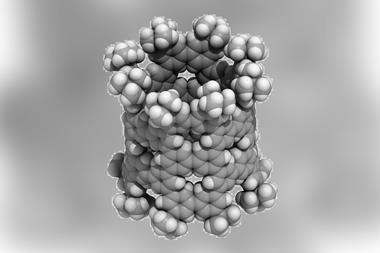Researchers contract carbon nanotubes down to their theoretical limit
The first reliable top-down method for making uniform carbon nanotubes has been demonstrated by scientists in China.
The diameter and chirality of carbon nanotubes should be well-defined and reproducible for applications like transistors or photoelectronic devices. However, synthesising consistent nanotubes is very hard and it is usually done using catalysts in bottom-up approaches.
Carbon nanotube growth is a mass-addition process so Ming-Sheng Wang, of Xiamen University, designed a mass-reduction method to reverse the process. Using a transmission electron microscope (TEM) to irradiate double-walled carbon nanotubes with electron radiation, combined with thermal annealing at 1200°C, Wang’s team watched as their carbon nanotubes shrank. Surprisingly, the irradiation didn’t introduce any disorder and the mass-reduction was even, rather than random. Regular kinks appeared in the TEM images, travelling up the length of the carbon nanotubes before finally disappearing and leaving behind a smaller tube that remained structurally pristine. They were able to shrink their carbon nanotubes from an initial diameter of 4.2nm down to 2.36nm after only 10 minutes. They shrank even further with longer irradiation and heating times, resulting in the smallest possible double-walled carbon nanotubes on the theoretical limit of stability, with the inner shell reaching a tiny 3.2Å in diameter. Any smaller and the tubes broke apart.
The process wasn’t limited to double-walled carbon nanotubes either, Wang and his team demonstrated that they could easily reach the theoretical diameter limit for all carbon nanotubes with up to four walls.
References
Y Cheng et al, Nanoscale Horiz., 2019, DOI: 10.1039/c9nh00285e

















No comments yet